At the zenith of Atami’s heyday, it was the golden prize of your average corporate employee. A spa town so highly regarded since ancient times that the Tokugawa shogunate had servants tasked with bringing Atami hot spring waters all the way to Edo Castle.
But these are just stories of long-gone glory days.
Explaining my love for Atami may seem counterintuitive at first glance. This hot spring destination is still relatively overlooked by the current explosive tourist wave that fills local headlines and fuels the fires of social media outrage while wearing its history on its sleeve in a way that some might find quaint, if not outright unappealing. The town mascot is a middle-aged, balding man, the castle is not an authentic historical site, and any eco-conscious visitor would likely wince at the coastal urban development.
Yet, I find so much comfort in Atami’s old-school charm despite these seeming flaws. My husband and I have visited this town at least once or twice a year for the past five years, drawn to its unsophisticated, unapologetically retro atmosphere. Atami may not fit the conventional definition of “cool,” and that is precisely why we love it.
- Brief History of Atami, or the Fall of Icarus
- The Beach Promenade: A Surprising Meiji-Era Pop Culture Staple
- Kinomiya Shrine: Cherished Home to a Millenarian Tree
- Kiunkaku: A Resting Spot for the Illustrious
- MOA Museum of Art: Haven for History and Art Lovers
- Atami Castle & Hihoukan: The Cherry on Top
- How to Get to Atami
Brief History of Atami, or the Fall of Icarus
Atami 熱海, literally meaning “hot ocean,” has a long history as one of Japan’s most famous hot spring resorts. The town’s geothermal waters have attracted visitors for centuries, with records dating back to the Nara period (710-794 AD). During the Edo period, Atami became a favored retreat for the Tokugawa shogunate, establishing its status as a top destination among the Edo elite and the ultimate aspirational spot for everyone else.
But its true golden age began in the early 20th century. Railway development shortened the distance from Tokyo, and the jewel of Shizuoka flourished even more as a popular getaway for the city’s elite. Riding the coattails of large corporate trips amid the bubble years, Atami’s star power kept rising. Atami geisha were reaching celebrity status, the town’s nightlife almost rivaled its hot spring appeal and resort and hotel developments were growing vertiginously.
And then, the bubble burst.
Atami crashed overnight. The rubble is still scattered for everyone to see. Flamboyant buildings here and there, some still abandoned, and old and gaudy billboard advertisements are some clues for newcomers that this quaint town has seen better days. But local continued efforts have prevented the town from fading in its entirety and for the past few years, Atami has started to enjoy a bit of resurgence.
So here I am, paying homage to my beloved town. Without any particular order, I’ll introduce you, dear reader, to some of the places that you shouldn’t miss in Atami and, hopefully, get you to see it through my eyes.
The Beach Promenade: A Surprising Meiji-Era Pop Culture Staple
Walking down to the sea from the station, there’s a lovely promenade along the coastline, next to Atami Sun Beach, that goes all the way south to Atami Water Park. One of the first things that will surely grab your attention is the prominent bronze statue of a man kicking down a woman.
This is actually a depiction of the most famous scene from the novel Gold Demon (Konjiki Yasha), a moment of heartbreak for the protagonist, Kan-Ichi, a humble but hardworking young man, when he discovers that his beloved fiancée, Omiya, betrays him over another man’s riches. One of the Meiji era’s most successful popular novels partially takes place in Atami and significantly contributed to the town’s popularity.
No more scandal-worthy sights await you for the moment. A few meters away, you’ll find the Jacaranda Promenade, a pleasant garden with beautiful purple blooms in early summer to enjoy a picturesque stroll along the waterfront until you reach Atami Water Park and its pretty, European-inspired terraces that give a Mediterranean feel to the harbor. Along the way, there’s the confluence where the Itokawa River flows into the sea, where another nice promenade follows the river on a path lined with plum trees on either side.
Kinomiya Shrine: Cherished Home to a Millenarian Tree
Among towering trees next to Kinomiya Station, Kinomiya Jinja is an ancient shrine with an otherworldly feel accentuated by its access at the other side of the tunnel tracks.
The picturesque shrine is actually a very special one dedicated to a sacred camphor tree that’s over 2,000 years old, and so is the enshrined deity, Isotakeru-no-Mikoto, god of forestry, among other things. The large, beautiful, and imposing tree has seen it all, and so visitors pray in front of it in hopes of improving their longevity and their resilience against life challenges.
Kiunkaku: A Resting Spot for the Illustrious
Kiunkaku, built in 1919 as a luxurious private villa for a wealthy industrialist, was subsequently transformed into a ryokan in 1947 until 1999, when Atami City took over and re-opened it one year later as a museum.
As an architecture enthusiast, it’s one of the places I love to visit because of its Taisho-era architecture with Western influences. No hint of playful irony here: this is probably one of the few actually sophisticated historical spots you can enjoy in downtown Atami. Even more so when I found out that literary giants like Dazai, Tanizaki, or Mishima (the latter two being among my favorite authors) were among the ryokan’s guests. Strolling around the gorgeous central garden is a simple pleasure that never grows old, just like the villa’s immaculately preserved room interiors.
MOA Museum of Art: Haven for History and Art Lovers
Perched on a hill overlooking the town and the sea, the MOA Museum of Art is a bit further away from everything else, so it’s only advisable if you’re spending at least a couple of days in Atami. This modernist-inspired brutalist building houses an impressive collection of Japanese and East Asian art, including paintings, ceramics, and calligraphy. Besides the main building, the complex includes the reproduction of an exquisite Japanese residence, a tea house and a striking underground hall at the entrance with a kaleidoscopic light and sound installation.
One of the museum’s highlights is also one of the most elaborate works of passive-aggressive mockery I have ever seen in history. This is a faithful recreation of a portable golden tea room that Toyotomi Hideyoshi, the most powerful feudal lord at the time and newly appointed Imperial Regent, ordered to have assembled in 1586 when the Emperor Ogimachi summoned him to the Kyoto Imperial Palace. Regarding the latter as a powerless figurehead, Hideyoshi complied by turning the tables and showing up in court with said tea room in such a way that it ended up being the Regent, the one hosting the Emperor, and not the other way around.
Atami Castle & Hihoukan: The Cherry on Top
As far as Japanese castles go, Atami Castle is magnificent from afar. A fine example of Azuchi-Momoyama architectural style, strategically located at the top of a mountain for a perfect town postcard.
Then you get closer, and if your eye is trained on Japanese castles all over the country like yours truly, the cheap-looking facade doesn’t add up. I learned upon entry about its historical pretense. It came into existence in 1959 as yet another tourist attraction. I confess I regretted my visit for a split second before loving it again. As kitsch as the idea of a fake castle could be, the effort is commendable, if only for consistency with Atami’s usual antics. It’s just perfect.
As if trying to make up for its lack of authenticity, it features an exhibition on Japanese castles and other samurai-related memorabilia. And then the floor above reminds you again not to take the place too seriously with a collection of shunga, or erotic ukiyo-e. It’s quite interesting, though, especially for enthusiasts of woodblock prints, as (understandably) those are the kind you won’t see at regular museums and galleries. Regardless of personal taste or interest in history, at the very least, the sweeping views at the top are worth the visit.
Nearby, the Hihoukan (adult museum) adds an even more eccentric and kitsch twist. The adult museum is firmly stuck in the Showa era, taking absolute ownership of its unapologetic campiness, which, oddly enough, makes it even more endearing and entertaining. Don’t expect a great deal of actual eroticism, as the x-rated exhibits fare better at getting a chuckle out of you than anything.
Going past the Hihoukan, you can hop aboard the ropeway for an extra scenic return ride.
How to Get to Atami
The fastest way to reach Atami is by using the Tokaido Shinkansen from Tokyo Station. The journey takes approximately 40 minutes on the Kodama and Hikari services. Alternatively, you can take the local train on the JR Tokaido Line from Tokyo Station or Shinagawa Station, which takes about 90 minutes. There are also direct highway buses from Shinjuku or Tokyo Station to Atami. The journey takes approximately between two and three hours.
Once again, Atami is changing. I wish it wouldn’t, but that’s just me being selfish. In a world that constantly seeks the new and modern, Atami remains refreshingly self-aware of its standing. However, new developments for young and trendy crowds, some of them laser-focused to please social media, are more in line with contemporary market demands. So, I can only hope for its timeless charm to endure as much as possible. And for you to enjoy it for what it is before it’s too late.



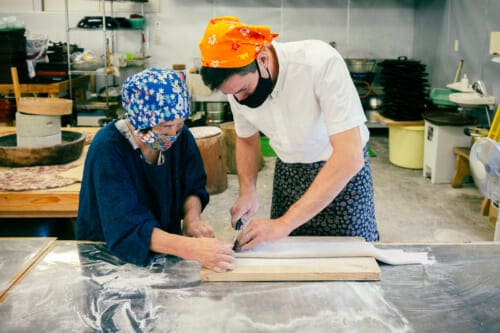
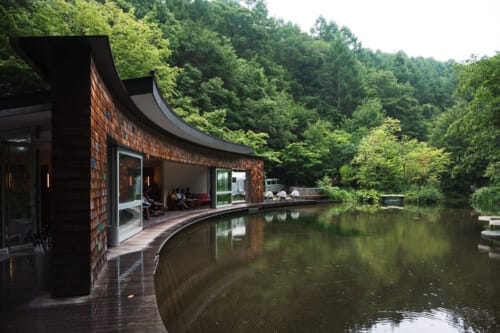
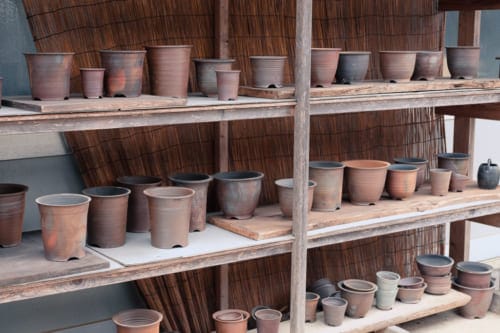
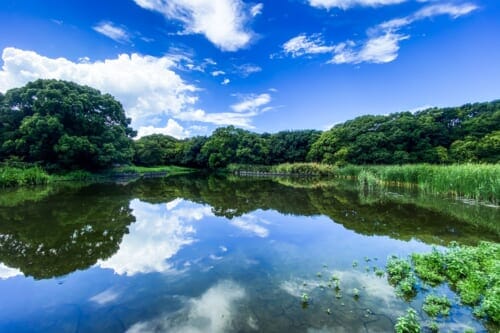
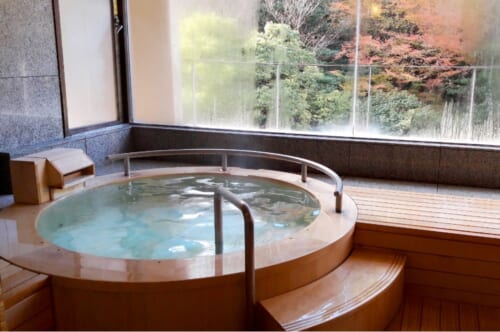


No Comments yet!